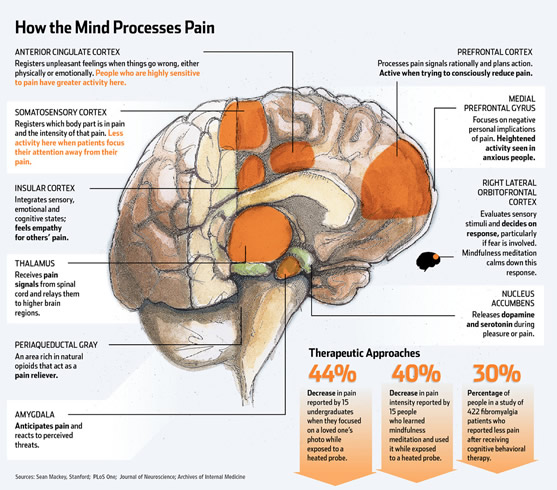
Source: Sean Mackey, Stanford. Plos One, Journal Neuroscience: Archives of Internal Medicine
Melinda Beck’s Wall Street Journal article Rewiring the Brain to Ease Pain looks at how you think about pain can have a major impact on how it feels.
That’s the intriguing conclusion neuroscientists are reaching as scanning technologies let them see how the brain processes pain.
That’s also the principle behind many mind-body approaches to chronic pain that are proving surprisingly effective in clinical trials.
Some are as old as meditation, hypnosis and tai chi, while others are far more high tech. In studies at Stanford University’s Neuroscience and Pain Lab, subjects can watch their own brains react to pain in real-time and learn to control their response—much like building up a muscle. When subjects focused on something distracting instead of the pain, they had more activity in the higher-thinking parts of their brains. When they “re-evaluated” their pain emotionally—”Yes, my back hurts, but I won’t let that stop me”—they had more activity in the deep brain structures that process emotion. Either way, they were able to ease their own pain significantly, according to a study in the journal Anesthesiology last month.
Source: Wall Street Journal
